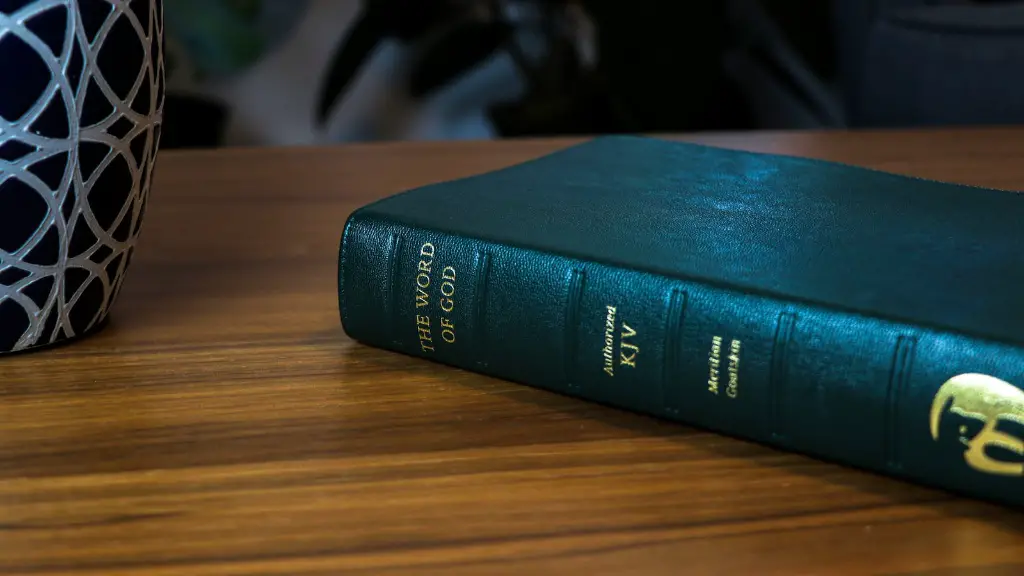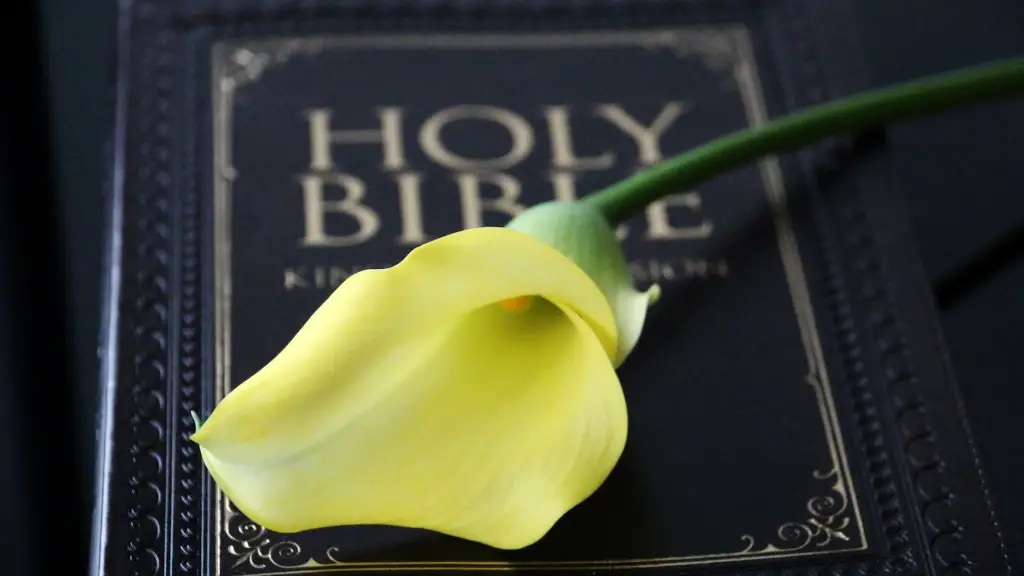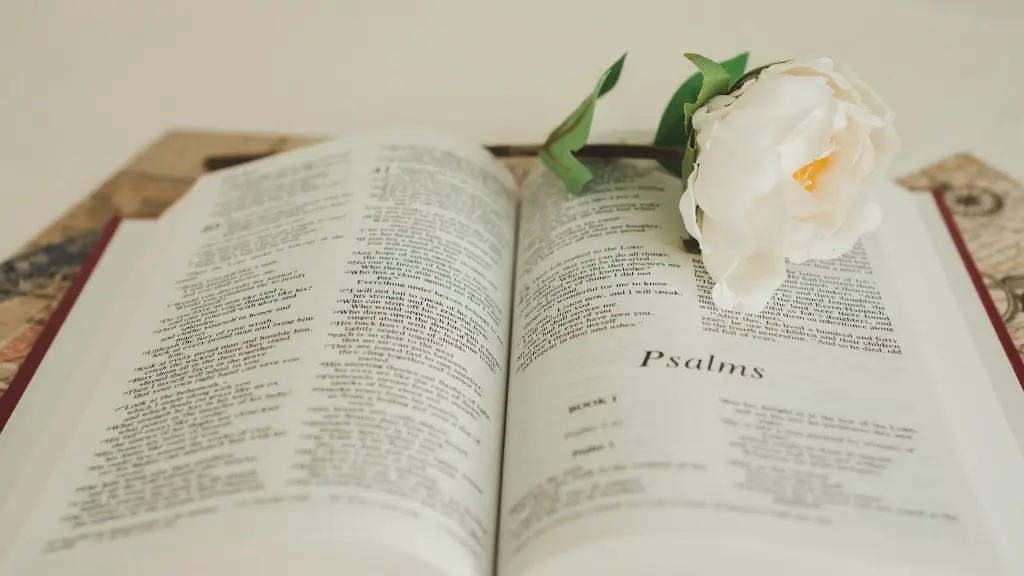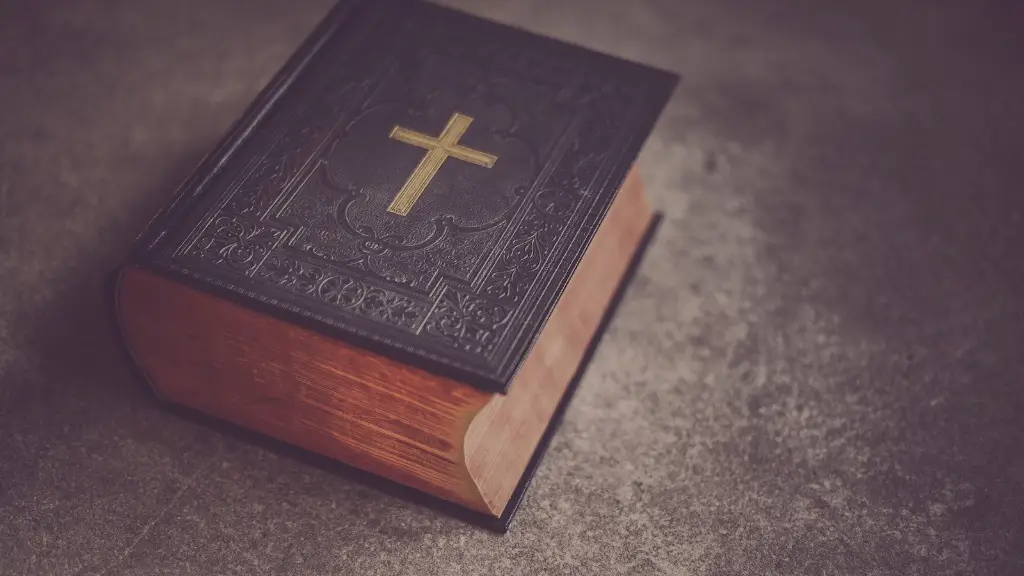There is no debate that the Bible is a source of enigmatic stories, from miracles to talking animals to events from long ago. Among the many tales mentioned in the Bible, one of the most debated is the mention of ‘dragons’ in the scripture.
While the traditional English translation of the Bible mentions the word ‘dragon’ six times, many other translations of the Bible don’t mention it at all. This could be misleading as the original Hebrew and Greek words used in these passages don’t actually mean dragons as we know them today. According to The Catholic Study Bible: “The Hebrews did not distinguish clearly between dragons and serpents, so we can’t be certain what it was that the biblical authors had in mind at the time of writing.”
What is known is that, at the time of writing, all cultures considered dragons to be powerful and powerful creatures. To early Israelites, dragons might have represented evil or divine power. As noted by scholars John J. Collins and Timothy Skordas: “Dragons as creatures of chaos…are also associated with the powers of darkness and evil.”
In the three passages in the Old Testament that refer to dragons, these creatures are described in various ways. In the book of Job, a great sea monster is mentioned. In the book of Psalms, the dragon is a metaphor for a cruel oppressor. In the book of Jeremiah, the dragon is used to describe a terrifying creature spewing fire and smoke.
In the New Testament, the dragon is mentioned only once in the book of Revelation where it is described as “that ancient Serpent, who is called the devil and Satan”. Here, the dragon is a symbol of the devil and his stature as a powerful and wicked force.
The conclusion we can draw is that officially the Bible does not define dragons as they are known today. It could be argued that the Bible references dragons as a metaphor for evil and power as well as a folkloric figure that held symbolic power in various ancient religious texts.
Dragons Represent Animals?
Beyond the debate about the exact nature of dragons in the Bible, other scholars have argued that these creatures are representations of real-life animals. The bible is filled with images of animals, many of them large and ferocious. Could dragons, too, be a representation of some larger animal?
One theory claims that the image of dragons is used to describe either crocodiles or large snakes. These animals were quite commonplace in the ancient world, and their reputation as fierce creatures of the land, air, and sea could have led the authors of the Bible to use them as metaphors for divine power or evil.
For example, the Nile crocodile was known for its sheer power and ferocity, and it was written about in many ancient Egyptian texts as an embodiment of chaos. If a similar creature was present in the Middle East during the time of the bible, it would not be surprising to find its image in scripture.
In addition, large snakes such as pythons were often seen as symbols of divinity and chaos in many cultures. A potential candidate is the python Simoeisios which was known to inhabit the Middle East at the time. Thus, it would be reasonable to say that the symbol of dragons was used to represent both of these powerful animals.
Myths and Legends
The idea of dragons has been around for centuries, and it’s no surprise that the Bible is filled with references to them. After all, many cultures in the area believed in dragons and considered them to be powerful symbols of chaos and evil.
The ancient Greeks, for example, believed in the myth of Typhon, a hundred-headed dragon that terrorized the Greek gods. In the Bible, this myth seemed to be echoed in the description of the dragon Leviathan, a seven-headed monster that is defeated by God.
In addition, stories from the Middle East and surrounding cultures described dragons as powerful creatures with wings and fire-breathing capabilities. One example of this is Ziz, a dragon-like creature that inhabits the sky and is mentioned in Jewish texts. Therefore, it could be argued that many of the descriptions of dragons found in the Bible may be attributing these legendary creatures with a symbolic divine power.
Modern Interpretations
In the modern world, some readers may interpret the mention of dragons in the Bible in a completely different way. For example, some people may believe that dragons represent different aspects of the human condition, such as fear and insecurity. This interpretation is further propelled by popular culture, which often uses dragons as symbols of power and transformation.
Others may believe that dragons represent divine power and a force for good, or that the dragon is a symbol of divine protection. This interpretation is seen in some Christian traditions, which view the dragon as a representation of the power of God and a symbol of faith in Him.
It is interesting to note that the Bible does not make any reference to dragons of any type, which suggests that the biblical authors were not interested in the mythical creature. Rather, they may have used the word ‘dragon’ as a metaphor to represent something else.
Conclusion
In conclusion, it can be said that the Bible does not define dragons as they are known today. Instead, the word ‘dragon’ may be used as a metaphor for divine power and evil, or even as a way to represent animals such as crocodiles and snakes. Furthermore, different people interpret the mention of dragons in the Bible differently, and they may view them as symbols of fear, insecurity, divine power, or protection. Ultimately, what’s clear is that the authors of the Bible used the word ‘dragon’ to reference something else, and it’s up to modern-day readers to interpret the meaning behind the symbol.
Relationship to Christianity
Despite the fact that dragons are never described as good creatures in the Bible, there is a positive relationship between dragons and Christianity in some forms. In ancient and modern history, dragons are often associated with the story of Saint George and the Dragon, in which Saint George slays a fierce dragon in order to rescue a princess. This legend is seen as a symbol of divine victory over evil, and it is often used to represent the power of God and the triumph of Christianity over evil.
In addition, dragons are often seen as symbols of protection and guardianship. This can be seen in certain Christian artworks which feature a dragon hovering over or guarding a person or symbol. It is believed that the dragon symbolizes divine protection, a belief that is still held in some cultures today.
Overall, the relationship between dragons and Christianity is complex. While dragons are never described as good creatures in the Bible, they can be seen as symbols of divine power, protection, and protection from evil. In this way, dragons can be viewed in a much more positive light.
Contemporary Interpretations
In contemporary times, dragons have been popularized in movies, books, and other forms of media. In many of these works, dragons are portrayed as intelligent, powerful, and emotional creatures, sometimes even as heroic protectors of humans.
This is a far cry from their portrayal in the Bible, where they are never depicted as friendly or helpful creatures. However, this is likely due to the fact that, in our culture, dragons have come to be seen as symbols of good and courage rather than evil.
The idea of dragons in popular culture is often used for comedic or dramatic effect, and it is used to show themes of power, courage, and nobility. In this way, dragons have become symbols of strength and bravery that we can all aspire to.
Furthermore, many people see dragons as symbols of transformation and personal growth. This is seen in the popular Harry Potter series, where the protagonist befriends and eventually tames a dragon and uses it to help him on his heroic journey. In this way, dragons can be seen as symbols of our own abilities to overcome challenge and grow into stronger versions of ourselves.
Symbolism of Dragons
Ultimately, it is clear that dragons are powerful symbols with a deep and complex history. In the Bible, the dragon is often described as a metaphor for evil and power, while in other cultures, dragons can be seen as symbols of protection, strength, and even divine power.
In popular culture, dragons have come to represent personal strength, courage, and transformation. These works often feature dragons who are depicted as wise and powerful creatures, symbols of heroic bravery and nobility.
No matter what interpretation of dragons one believes in, it is clear that this mythical creature has had a lasting impact on our culture and our society. From ancient religious texts to modern tales of courage and transformation, dragons remain powerful symbols of protection, power, and divine intervention.





